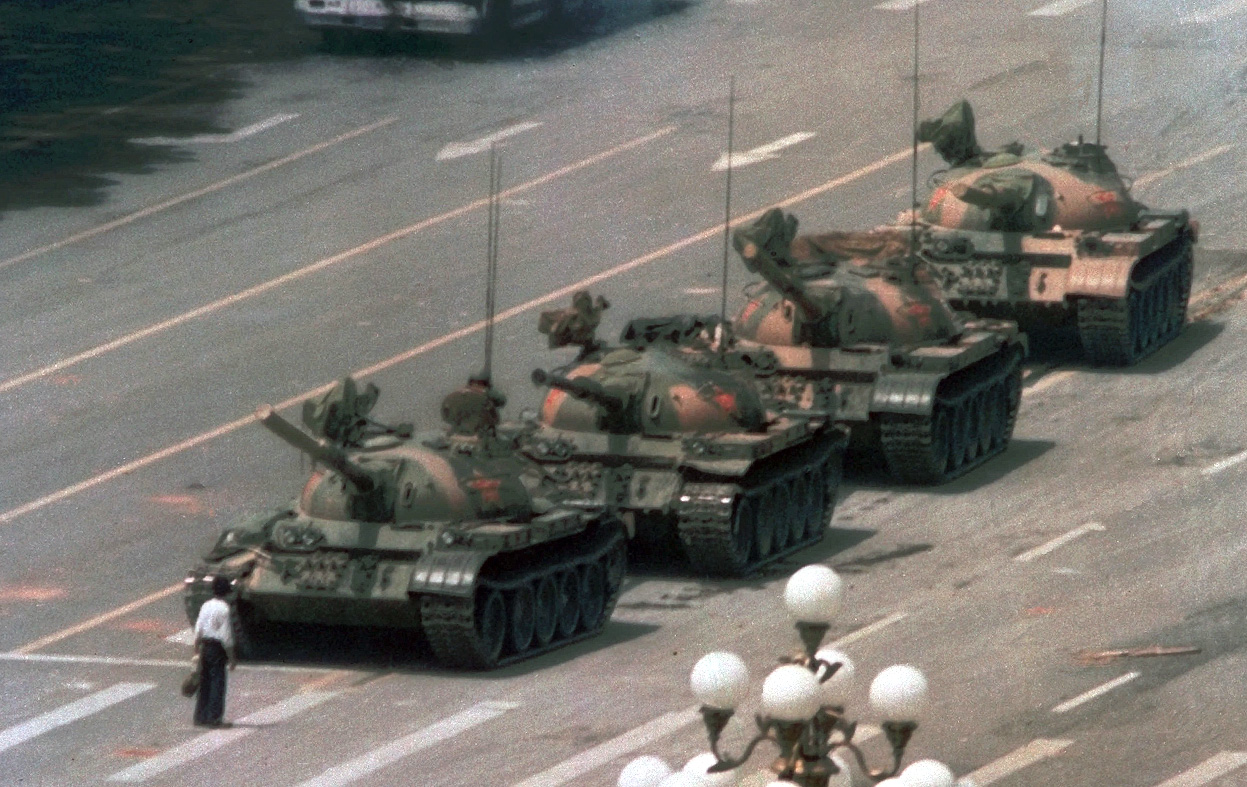By Hardev Sanotra
As India recalled its darkest period 40 years ago in June, China too marked its worst days in its recent history in same the month. But the remembrance of the events 29 years ago was more in the breach here.
 On June 4, 1989 tanks of the People’s Liberation Army and its personnel armed with automatic rifles shot dead hundreds, if not thousands, of protesters in Tiananmen Square. No official figures have ever been released but protestors said they had seen thousands of bodies strewn in and around the square.
On June 4, 1989 tanks of the People’s Liberation Army and its personnel armed with automatic rifles shot dead hundreds, if not thousands, of protesters in Tiananmen Square. No official figures have ever been released but protestors said they had seen thousands of bodies strewn in and around the square.
The Chinese government said it had used strong force to crush a ‘counter-revolutionary plot’ which was aimed at overthrowing those in power. But the students who were protesting from April said they were seeking “more democracy” in a nation which had not seen any.
On the 26th anniversary of the massacre, there was not much of a protest at the famed square with thousands of police personnel keeping a watch for any spontaneous show of anger against the government. The army kept a vigil from the shadows. This has been repeated every year since, with the government putting in overwhelming force to keep any protests at bay.
On the last day of June, the scene at the square was of a tourist paradise. Thousands of Chinese from Beijing and elsewhere descended on the square where the biggest killings took place. But for them it was as if the massacre did not happend. Only residents of Hong Kong, China’s Special Administrative Region, gather the courage to protest every year, as they did this year, with thousands coming out on the streets.
The power of the state, and its control over the minds of its citizens in mainland China, has not reduced much in almost three decades, though prosperity has spread wide. The Chinese are afraid to talk to a journalist about what had happened so many years ago. Even those Beijing residents who could not have missed the events are cagey. Most took refuge behind a language they said they do not understand. Only if one can catch an individual were fear of prying eyes is absent, do they open up about the “monumental tragedy” that befell the country and as it being the “most shameful episode” in its history.
The protests in Beijing were triggered by the death of Hu Yaobang, an ex-General Secretary of the ruling Communist Party, seen as a reformer who lost out in an internal power struggle with the hardliners winning and consolidating their position. Students from all over Beijing came to the Tiananmen Square to register their protest.
The protests, which went on for seven weeks, made news all around the world. They also took a cue from the Glasnost or openness being spread by Mikhail Gorbachev in Russia, The students, and their supporters, built a rough replica of the Statue of Liberty, demanding that the government grant them freedom of speech, allow the press a free hand and restore workers’ say in industry. It was a powerful movement with more than a million people, according to one estimate, filling the vast expanse of the square near downtown Beijing.
At first the government made some conciliatory noises. The press was allowed to report the protests and people came to know why the protests were happening. But when they spread to dozens of other cities, ‘Paramount Leader’ Deng Xiaping, who had ushered in economic reforms, decided to show his iron hand. The market reforms earlier had led to widespread unhappiness with the system, with corruption creeping in. Hu had protested against the corruption and had wanted political freedoms to keep pace with the economic reforms.
This was not to be. Deng ordered over 300,000 troops to crush the movement. Although in China it’s called the June 4th incident in hushed tones, the crackdown started the day before. Automatic fire was heard throughout the evening and night and when dawn broke, Beijing could hardly grasp the enormity of the massacre. TV and newspapers, again under the grip of the state, reported none of the details except to deride the protests. Foreign reporters could barely begin to understand the dimensions of the deadly force used, before many of them were asked to leave.
An iconic picture and video from the crackdown showed a Chinese, possibly a farmer confronting a line of tanks. He moved to stop the tanks again when they sought to bypass him, before he is forcibly taken away by other civilians. The ‘tank hero’, as he was called, was never traced. He just vanished, just as much of the history in China has vanished, leaving behind only official versions.
Although India came to grips with its 21 months of autocratic rule by prime minister Indira Gandhi after the end of the emergency, the Chinese were never allowed to do any soul searching. Yet, in the minds and hearts of those who are old enough to remember, the events remain as the darkest chapter in their history. Yet, like any totalitarian regime, the Chinese government has been able to wipe the events of 1989 clean from the political slate and from public discourse.